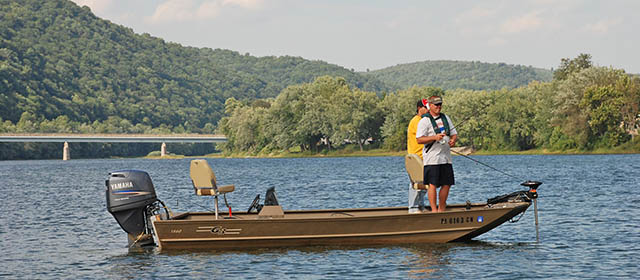Why Choose a Boat Jet Engine Vs Propeller?

Many people are unfamiliar with jet-propulsion engines on boats and yet they see them whenever they glimpse personal watercraft (PWC). PWCs use a gas-powered jet engine for propulsion. Yet the same propulsion system can be used on larger craft. Jet-engine-outboard-powered boats are common on many rivers in North America, especially in the Pacific Northwest and Alaska, but also in the Midwest and Northeast. These include tiller- and console-steered jet boats, ranging in length from 16 to 24 feet or more. For many years I had a 17-foot jet-powered aluminum boat, so I’m familiar with jet-engine pros and cons.
Why would you go for a boat jet engine vs propeller? For most non-river, open-water boating situations you wouldn’t. For the purpose of this discussion, let’s focus on non-PWC-craft, which means larger aluminum and fiberglass boats. Also, let’s note that the words jet boat, jet drives, and jet engines all refer to essentially the same propulsion system.
HOW BOAT JET ENGINES WORK
If you’re wondering about a jet vs propeller boat, it helps to understand how these systems work. With most gas engines, a drive or gear case connects to a propeller, which turns when the throttle is advanced and moves a boat well both forward and backward (reverse).
With jet propulsion there is no propeller. Water moves through a pump that is powered by an impeller. It streams water through a nozzle, thereby moving the boat forward. Movement backward is highly restricted, as this system does not pull in significant water to achieve reverse movement.
ADVANTAGES
It’s all about running in shallow water to get to places inaccessible by propeller-driven boats. Shallow here means inches deep. And probably rocky. A flat-hulled boat with jet engine sitting high on the transom (some use a jack plate), can run up or down a river through riffles and over barely submerged sandbars (and get to pools where steelhead, trout, salmon, shad, walleye, and smallmouth bass lay). This is why you’d opt for a boat jet engine vs propeller.
Secondarily, there is no propeller to cut people, crab pot lines, or other objects; to get wrapped in a dock line or to cut fishing line; and to get misshaped by contact with hard objects.
DISADVANTAGES
- Turning and maneuvering take getting used to, as the boat handles differently from a propeller-driven craft.
- There is virtually no reverse movement.
- Rough water (big waves) maneuvering is difficult.
- Gas consumption (at least with outboard jets) is higher than with a comparable prop motor, and horsepower rating is a third lower.
- Many jet engines are noisy.
- The impeller is subject to pulling in sand (bad for the water filter) and especially to clogging with grass, requiring the operator to shut off the motor and lean far over the transom to remove grass before you can proceed.
